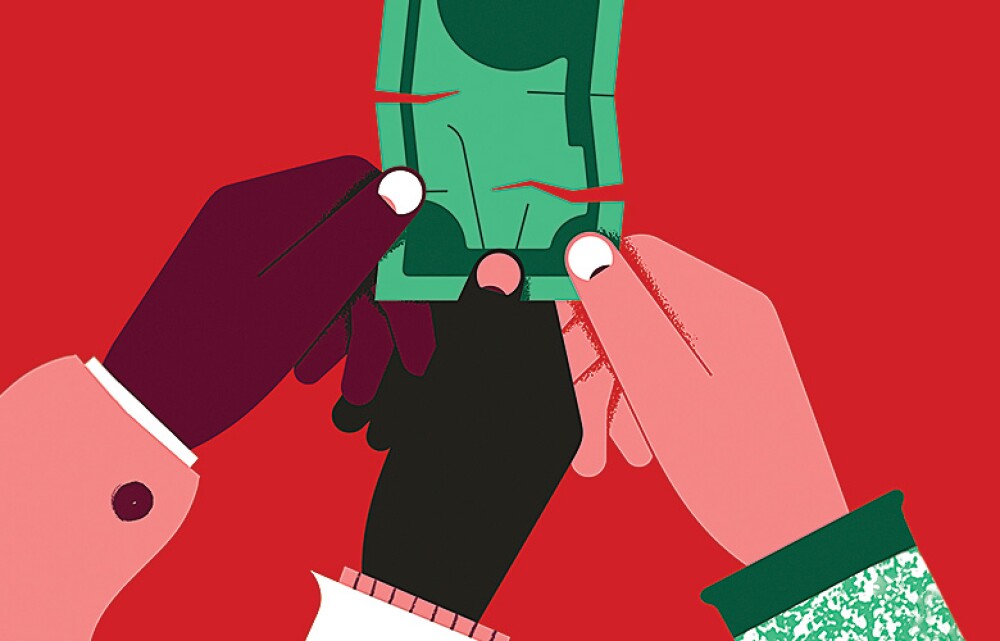Risky bonds are being sold at an unprecedented pace in developing economies as borrowers rush to do favorable deals with yield-hungry investors. The surge may not end well.
Governments and companies in emerging markets issued $252.7 billion of speculative-grade bonds this year through November 14, smashing the record $172.1 billion sold in all of 2016, according to Dealogic. The 47 percent jump from last year’s level may be a boon to borrowers, but it raises concern that investors will be harmed by their reach for yield.
“With the high-yield markets facing headwinds after a very impressive run, an onslaught of new issuance runs a notably higher risk of being the straw that breaks the back of elevated valuations,” says Mohamed El-Erian, chief economic adviser at Allianz. “This is a possibility that investors in the asset class would regret.”
Tajikistan — not exactly a bastion of wealth — raised $500 million in September from its first international bond sale, a sum more than 7 percent of its gross domestic product. The Central Asian country will pay an annual interest rate of 7.125 percent for the below-investment-grade debt, according to the Financial Times. In June, Argentina, which has defaulted on its debt eight times since gaining independence from Spain in 1816, sold $2.75 billion of 100-year bonds, also with a 7.125 percent coupon.
It’s difficult to blame borrowers for extracting favorable deals when markets are wide open. Eager to put their money in emerging-markets bonds on the belief that U.S. interest rates will remain very low, investors may be underestimating how much the Federal Reserve will tighten its monetary policy and the impact that will have on emerging-markets debt, according to analysts.
“This is the tail end of the credit cycle,” says Win Thin, global head of emerging-markets strategy at Brown Brothers Harriman & Co. “Borrowers are trying to push through the door as fast as possible, given that the Fed is raising interest rates.”
If the forecasts of Federal Reserve officials are correct, by the end of next year the fed funds rate will have at least tripled from a range of 0.5 percent to 0.75 percent at the beginning of 2017. The central bank — which last raised its benchmark rate in June to a range of 1 percent to 1.25 percent — signaled in September that it would likely hike rates again in December and then three times in 2018. Still, on November 14, the fed funds futures market priced in a 55.4 percent probability that the central bank will lift rates no more than once in the first 11 months of next year, meaning many investors may be in for a rude awakening if the Fed’s projections turn out to be correct.
“We already saw the impact [of Fed tightening] during the taper tantrum of 2013,” says Ali Hassan, senior fixed-income analyst at Thornburg Investment Management in Santa Fe, New Mexico. He’s referring to the surge in bond yields globally after former Fed chair Ben Bernanke shook markets in May 2013 with his comments that the central bank was considering tapering its bond-buying program, which it had implemented after the 2008 financial crisis. Now, as the Fed continues steps toward tightening its monetary policy, Hassan warns that higher rates will hurt countries in the early stages of economic recovery, such as Brazil.
Rate hikes tend to push the U.S. dollar higher against foreign currencies, making it more expensive for emerging-markets borrowers to repay their dollar debt. Meanwhile, the fragile state of many developing countries’ finances is problematic because of their large budget and current-account deficits. Other risks include volatile commodity prices — rising crude prices can hurt oil-importing nations, for example, while falling prices can squeeze oil exporters — and geopolitical instability in areas like the Middle East and North Korea.
Many emerging-markets bonds are illiquid, which means they can be difficult for bondholders to sell when others are trying to do the same. “People could be running for a small and shrinking door,” says Thin, warning that investors may become stuck holding debt that’s dropping in value as buyers vanish.
Knowing the risks, why would investors accept the 7.125 percent rate offered by Argentina and Tajikistan? “It’s an indication of frothiness and a reach for yield,” Hassan says. By comparison, the Bank of America Merrill Lynch U.S. High Yield Index had an effective yield of 5.84 percent on November 17.
Thin is a bit surprised by investors’ enthusiasm for emerging-markets debt, saying that “credit quality has really declined” and interest rates on junk bonds “aren’t high enough in many cases to compensate for the risk.” He points to Venezuela defaulting on some of its bonds in November, catching many debt holders off guard.
“A lot of investors are talking themselves into the idea that this is not such bad debt,” Thin says of emerging-markets deals. Even with more cynical investors, he adds, “you get the sense that people are holding their nose as they buy.”
This doesn’t mean every bond is toxic, with analysts still seeing investment opportunities in countries with stronger fundamentals, such as China, South Africa, Russia, and Thailand. But the burst of junk bond deals has made Arvind Rajan, head of global and macro at Prudential Financial’s PGIM Fixed Income division, more cautious. “We’re participating in fewer than one in ten issues that come to market,” he says.







